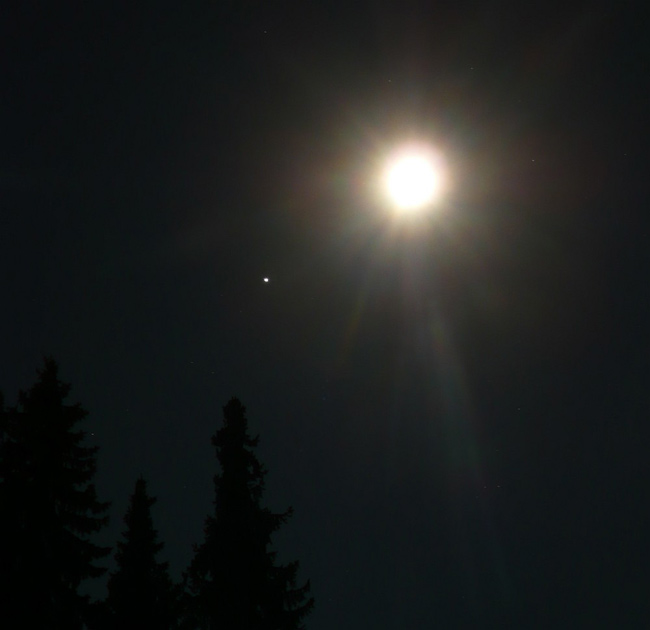'Super' Harvest Moon Marks Earth's Changing Seasons

Abright Harvest Moon ushered in the changing seasons onEarth late Wednesday (Sept. 22) in a rare cosmic arrangement that hasnotoccurred in nearly 20 years.
Thefullmoon of September arrived on the samenight as the autumnal equinox, which occurred last night at 11:09 p.m.EDT(0309 GMT Sept. 23) to mark the official start of the fallseason inthe Northern Hemisphere, as well as spring in the south.
Notsince Sept. 23, 1991 has a full moon occurred on thesame night as the fallequinox,and it won't happen again until 2029, wrote astronomerTony Phillips in a NASA announcement.
Accordingto Phillips, the Harvest Moon typically occursa few days or weeks before or after the fall equinox. This year,though, thefull moon occurs just six hours after the equinox, making it whatPhillipscalled a "Super Harvest Moon."
Amateurastronomers around the world took advantage ofclear skies to gaze at the bright full moon.
"Justso beautiful," wrote skywatcher RuthBurkhead, who snapped a photoof the moon and Jupiterfrom her backyardin Eustis, Fla.
TheSeptember full moon also coincided with an alignmentof Jupiter and Uranus, adding extra flavor to this year'sfall equinox.
Get the Space.com Newsletter
Breaking space news, the latest updates on rocket launches, skywatching events and more!
InK?nigswinter, Germany, skywatched DanielFischer said he couldn't let the moment pass without a photo.
"Whenthe full moon, Jupiter in opposition and fallequinox all coincide, *something* has to be tried photographically,"Fischer wrote on Twitter, where he posts sky photos under the nameCosmos4u. [Fischer'sphoto of the moon and Jupiter.]
Anequinox is a time in which the sun is directly aboveEarth's equator, when the day and night are roughly the same length.There aretwo equinoxes each year, one in the fall and one in the spring.
Everyfull moon has a different name, one which variesdepending on different cultures.
TheHarvest Moon gets its name from agriculture, Phillipsexplained.
"In the days before electric lights, farmers depended on brightmoonlightto extend the workday beyond sunset," Phillips wrote. "It was theonly way they could gather their ripening crops in time for market."
Join our Space Forums to keep talking space on the latest missions, night sky and more! And if you have a news tip, correction or comment, let us know at: community@space.com.

Tariq is the Editor-in-Chief of Space.com and joined the team in 2001, first as an intern and staff writer, and later as an editor. He covers human spaceflight, exploration and space science, as well as skywatching and entertainment. He became Space.com's Managing Editor in 2009 and Editor-in-Chief in 2019. Before joining Space.com, Tariq was a staff reporter for The Los Angeles Times covering education and city beats in La Habra, Fullerton and Huntington Beach. In October 2022, Tariq received the Harry Kolcum Award for excellence in space reporting from the National Space Club Florida Committee. He is also an Eagle Scout (yes, he has the Space Exploration merit badge) and went to Space Camp four times as a kid and a fifth time as an adult. He has journalism degrees from the University of Southern California and New York University. You can find Tariq at Space.com and as the co-host to the This Week In Space podcast with space historian Rod Pyle on the TWiT network. To see his latest project, you can follow Tariq on Twitter @tariqjmalik.









